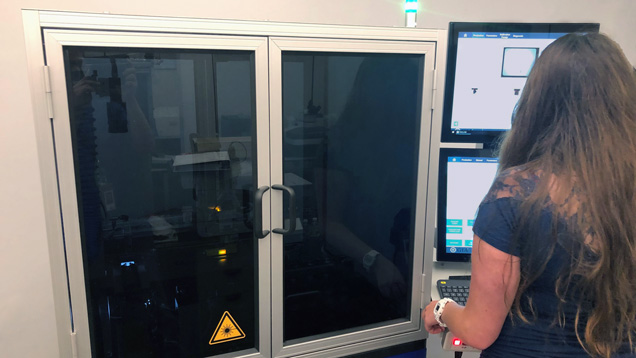How Do I Know if the Fancy Melee in My Jewelry is Natural Diamond?
September 18, 2020

Melee diamonds are like the bridesmaids to the bride, the chorus line to a Broadway show or a side dish to a holiday meal. They are there to draw attention to the star of the show, adding intrigue and interest — but never detracting from the main event.
Melee diamonds, which weigh less than 0.2 carats, are inexpensive compared to larger stones, so they can be generously used as dazzling accents in jewelry and watches. Their brightness and scintillation enhance the center stone in a halo-style ring or create intricate patterns in a pave-set design. Often cut as round shapes, they are also available in fancy shapes, such as emerald, princess, radiant and marquise.
The challenge for the jewelry trade: it is quicker and cheaper to grow small diamond crystals, so melee-size laboratory-grown and simulated diamonds are abundant in the market. Given their small size and the large number of loose stones in a parcel, laboratory-grown and treated or simulant melee diamonds can be mixed in with natural diamonds — and missed.
GIA addressed this challenge in 2016 with a melee analysis service for round diamonds, the most common shape of melee, an automated system that analyzes and sorts melee-sized diamonds quickly and accurately. The goal of the automated process is to minimize the percentage of natural diamonds that will be referred for further testing.
“The best instrument will pass 100 percent of natural diamonds, with 100 percent laboratory-grown and simulants referred for further testing,” said Tom Moses, executive vice president and chief laboratory and research officer. “No single instrument in the world, however, can pass 100 percent of natural diamonds, because there is always a small percentage of natural diamonds that show similar features to man-made or treated stones.”

Millions and millions of small round diamonds have been analyzed since then, but there has also been a need to screen fancy-shaped melee, according to Moses.
“The watch industry, for example, uses many fancy shaped diamonds and wants to use high-quality natural melee diamonds. They often depend on the suppliers to guarantee that their fancy shape melee is natural and not man-made,” Moses said. To meet the needs of their customers, many diamond suppliers want to get their fancy shape melee screened by GIA.
GIA scientists working on the issue of fancy shape melee screening developed a set of operating principles and laser technology they believe address this complex task. The team of scientists, along with engineers from GIA’s instruments group, worked together to create a prototype. After testing, software and mechanical engineers helped to develop a fully automatic system for large-scale screening of fancy shape melee diamonds.
The process to develop the technology and build the new system took about three years, but the team is pleased with the results, Moses said. Compared with the previous instrument for diamond melee, this new one refers fewer natural diamonds for further testing.
“With this new instrument, we can analyze every shape of melee,” Moses said. “The new machine uses new principles and analysis techniques to detect laboratory-grown and simulant melee from natural diamonds — and can do it much more efficiently and accurately than ever before.”

The new GIA Analysis Service for fancy shapes was announced in August 2020 and is offered at most GIA labs. Click here for more details.
Benefits For Suppliers and Retailers
The ability to sort natural melee from man-made, treated or simulated stones, has the potential to offer new opportunities for suppliers.
“We will discuss this with our niche and elite customers. Only they would prefer something like this as it will be a value addition to their product,” said Premal Chokshi, general manager of sales for Rosy Blue in Mumbai. “Regular diamond manufacturers, traders and diamond jewelers will not pay for getting their [melee] stones certified; it’s only the niche customers we want to target.”
Melee screening also gives retailers the ability to assure their clients that all of the melee in any piece of jewelry or watch is 100 percent natural diamond.
“For the clients, they will be able to give consumers the confidence that the goods coming to them have already been screened and tested by the biggest lab in the world — GIA,” said Rajesh Lakhani, director of Kiran Gems in Mumbai. “The trust and faith relationship is 100 percent there and people are attracted to that — especially consumers.”
Amanda J. Luke, a former senior communications manager, was an editor and writer at GIA for 19 years.



